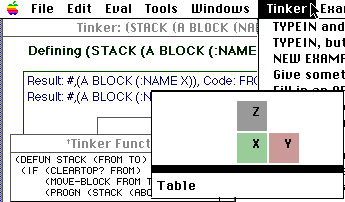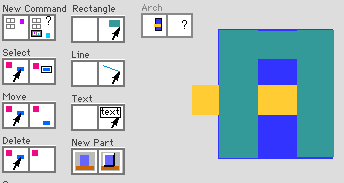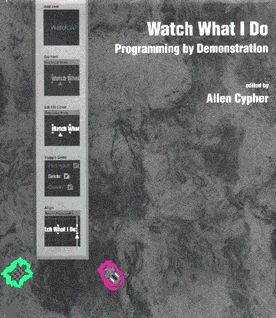
Henry Lieberman, Tinker: A Programming by Demonstration System for Beginning Programmers, in Watch What I Do: Programming by Demonstration, Allen Cypher, ed., MIT Press, 1993.

Programming is the art of teaching procedures to a computer. Making a good programming environment for beginning programmers is an enterprise that can exploit strong connections between principles of human learning and machine learning. My experience as a teacher led me to the conviction that working with concrete examples is the best approach both for a teacher to explain ideas to a student, and for a student to learn. Why can't examples play a more important role in a programming environment?
This paper presents Tinker, a system that permits a beginning programmer to write Lisp programs by providing concrete examples of input data, and typing Lisp expressions or providing mouse input that directs the system how to handle each example. The user explicitly indicates which objects serve as examples, and may present multiple examples that serve to illustrate conditional procedures. The machine records the steps of the computation, and formulates a program to handle the general case.
Tinker provides some capabilities that remain unique among programming by demonstration systems. As a programmer's system, it requires more knowledge of a programming language that a purely direct-manipulation interface, but provides access to more computational power as a result. It is perhaps the most computationally general programming by demonstration system, capable of synthesizing any procedure expressible in its underlying Lisp language. It remains one of the few that accepts multiple examples, enabling conditionals and recursion Each set of examples constitutes a partial definition, which can be incrementally augmented with positive or negative examples.
The home page for
and
 Mondrian
Mondrian

Watch What I Do: Programming by Demonstration
Allen Cypher, ed. MIT Press, 1993.